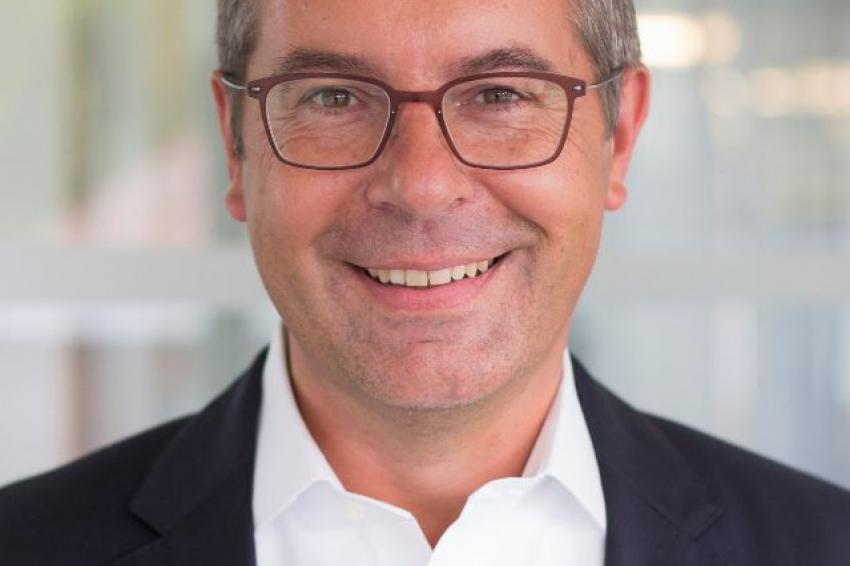Proactively Shaping the Transformation Path
Despite the corona pandemic, moving to a CO2-neutral chemical industry remains high on the social and political agenda. The chemical industry contributes significantly to industrial CO2 release – in Germany alone about 42,000,000 t in 2018. Against this background, the German chemical industry, through its associations, has committed itself to the goal of being CO2-neutral by the year 2050.
In its 2020 annual conference, VCW brought together relevant stakeholders from industry, science, society, and politics. 200 participants presented and discussed possible strategies and paths of transformation: What business opportunities and risks are involved in the transformation process? Which developments must companies prepare for? How should the chemical industry cooperate with politics and society to succeed in creating a CO2-neutral chemical industry in Germany and Europe, competitive on a global scale?
Here are some perspectives and issues emerging during the conference day in the various virtual presentations and discussions.
A Big Challenge – a Gigantic Opportunity
The Challenge: A CO2-neutral chemical industry asks for a complete redesign of all major production processes, materials circles, and a thorough review of logistic structures.
Typical representatives of the German chemical industry (BASF, a major global corporation with 12 different business units; Covestro, a leading specialty chemicals group, Infraserv Höchst, one of Europe's largest operators of industrial parks for chemical and pharmaceutical companies) presented their strategies and ongoing programs to reduce CO2 emissions. It became clear that a CO2-neutral chemical industry requires a complete redesign of all key production processes, material cycles and a thorough review of logistics structures. Furthermore, it requires a quantum leap in the use of renewable raw materials and energy sources.
But every company has its own specific priorities:
- BASF is pursuing the goal of achieving CO2-neutral growth by 2030. This means that specific emissions must continue to fall if the company is to achieve the targeted volume growth: from 2.2 metric tons of CO2 per metric ton of product in the year 1990 to 0.4 in the year 2030. The main levers for achieving this goal are further increases in energy and process efficiency, the use of renewable energies for power and steam generation, and research into so-called "breakthrough technologies", which are expected to play a key role in further CO2 reduction, especially from 2030 onwards. Since a good 80% of BASF's CO2 emissions are linked to the energy supply required for chemical production, a significant reduction in CO2 requires reliable availability of cost-effective renewable energy.
- Covestro emphasizes the importance of the circular economy concept for reducing CO2 emissions on the way to climate neutrality. This asks for ending one-time use in consumption and production, avoiding waste as far as possible and establishing consistent value-added cycles. Better management of carbon cycles, use of CO2 as raw material and increased use of bio-based materials, plastics recycling, and use of renewable energies are essential building blocks on the road to climate neutrality. This has to be accompanied by the testing and implementation of new business models that focus on the concept of material cycles. All in all, Covestro aims for shaping the circular economy industry and emphasizes the importance of innovative, cross-sector partnerships for successful management of the transformation process.
- Infraserv Höchst is transforming the industry park it operates in close cooperation with local companies. First, the infrastructure must be (re)designed: Energy has to be provided sustainably, safely and cost-effectively by producing it locally or using the national energy network. Renewable energy sources are gaining in importance here. Disposal offers the possibility of implementing closed loop recycling management with e.g. phosphorus recycling or the production of biogas from industrial waste. Secondly, the industrial park has to work also like an innovation campus. For example, Power-to-X technologies are tested and integrated in cooperation with scientific institutions and start-ups into industrial production. And thirdly, synergies via regional clusters need to be identified and leveraged. For example, hydrogen from the industrial park will also be used in the future to refuel regional trains. The company is open for such and other innovative partnerships.
It became clear: The transformation of a single company to become CO2-neutral will not succeed in isolation and limited to its premises. All leads discussed require interaction with other players. The challenge: Transforming value chains and creating new ecosystems and infrastructures that transcend company and country boundaries which must be tackled holistically by a systemic approach. Green hydrogen and green electricity must be available at competitive prices, as well as renewable and sustainably produced raw materials.
The lessons learned from the market introduction of electro-mobility (many new e-cars at dealerships, few charging points in the area) should be incentive enough to view the transformation not as an individual problem of just one company or industry, but as a cross-sector challenge that can only be successfully mastered through coordinated action.
This represents a perfect stage for Europe and, in particular, Germany with its deep rooted engineering and science culture to demonstrate thought leadership and its high technical, engineering, and scientific competence in chemistry and complex production systems (‘Verbund’ approach).
Going after the ambitious goal of CO2-neutrality in the year 2050 will create new growth areas for European and German industry. Exports will receive new stimuli. At the same time, overprotective and inflexible regulations should not get in the way of progress to avoid curbing investments and encouraging industry to migrate abroad.
A 30-Year Marathon – but at Sprint Speed
Given the lead times for major investments in the chemical industry to come on stream (permits, stakeholder management, construction, logistics), a period of 30 years is not a comfortable time buffer. Because of the wide range of business partners and external stakeholder involved, managing the related interfaces will be a complex and time consuming challenge. So we need to run rather than walk.
Success Requires More than New Technologies and New Business Models
Because of the wide range of external stakeholder involved, technology or business model based solutions need to be backed by advocates from politics and society. Otherwise they may be ‘burnt’ for the wrong reasons and rendered unfit for large scale application. Example: GMO technology, wind power.
A New Mindset Is Needed
System changes of the scale of CO2-neutrality for a whole industry sector require a new mindset. It needs to include external stakeholders representing the society and politics and involve them in key decisions – not only in a regulatory but also in a constructively co-designing and co-owning spirit.
Interdisciplinary thinking is required so that each actor also considers roles and interests of other stakeholders. There is a need for "entrepreneurially thinking politicians", who take the economic implications of their actions fully into account, as well as "politically thinking entrepreneurs", who do not perceive the social discourse as a threat or a nuisance. And civil society actors should also take into account the specifics of the industry as well as the risks associated with transformation. Ultimately, successfully shaping transformation requires the right speed and timing ("finding the window of opportunity") and balancing different economic, ecological, and social interests ("clean and fair results").
Presentations of the conference can be found here.
The Association for Chemistry and Economics (VCW)
A sub-sector of the German Chemical Society (GDCh), the vision of VCW is combining natural sciences, especially chemistry, and economics. Goals are the formation of an international chemical industry network and the creation of a forum for chemists, engineers and service providers in the chemical and pharmaceutical industry where chemical-economic discussions can be conducted in an open and proactive manner.
Kontakt
GDCh - Fachgruppe VCW (Vereinigung für Chemie und Wirtschaft)
Varrentrappstr. 40-42
60444 Frankfurt am Main
Deutschland














